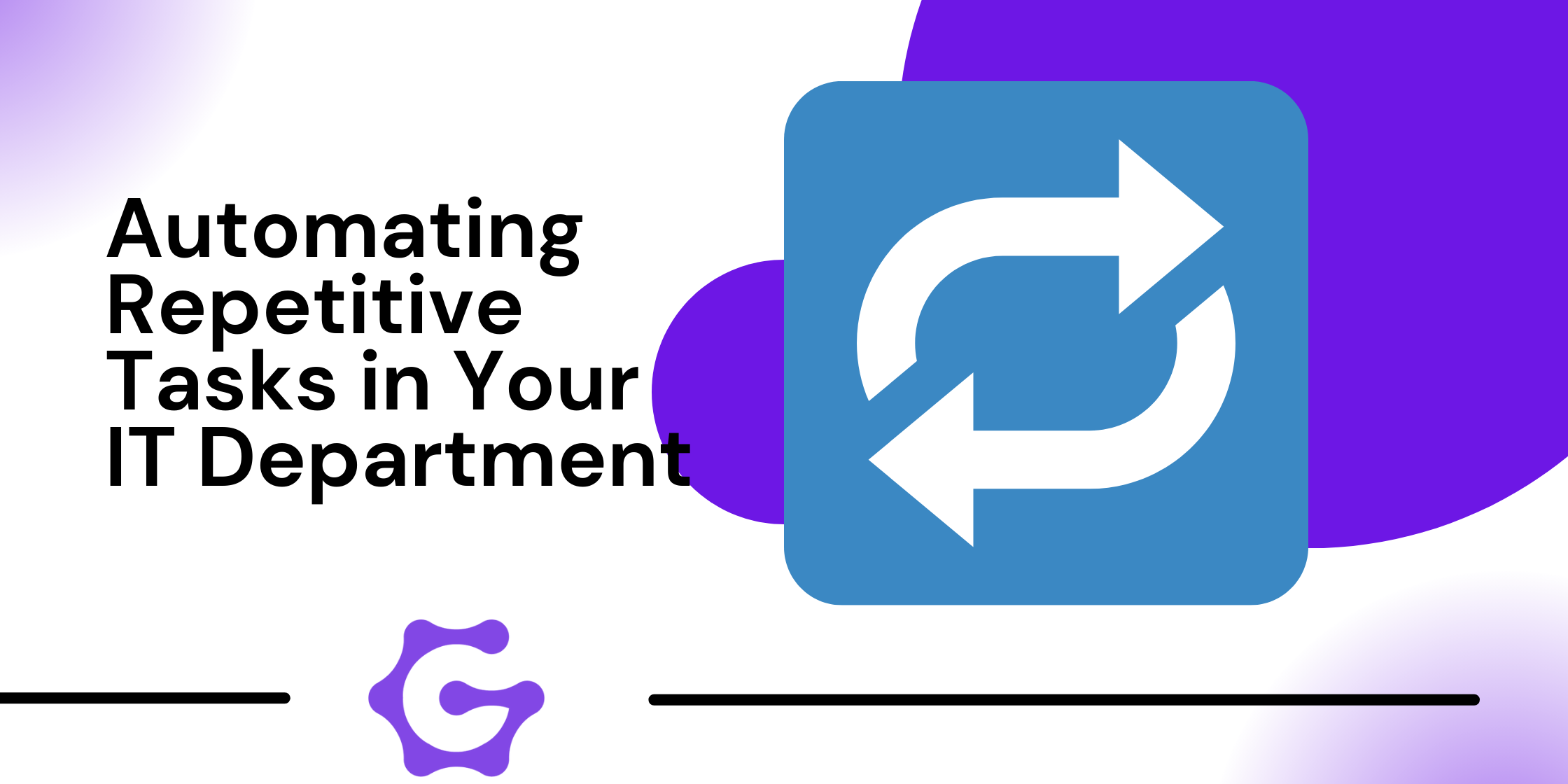Automating Repetitive Tasks in Your IT Department

The pressure to enhance efficiency, reduce costs, and streamline operations has never been higher. Many IT departments are bogged down by repetitive, time-consuming tasks that consume resources better allocated to strategic initiatives. This is where IT process automation can be a game-changer, enabling teams to shift their focus from mundane activities to innovation and growth.
What is IT Process Automation?
IT process automation refers to the use of software tools and technologies to execute routine IT tasks without human intervention. These tasks can range from simple activities like resetting passwords to complex workflows such as provisioning new servers or managing network configurations. By implementing automated IT workflows, businesses can achieve faster task completion, fewer errors, and significant cost savings.
The Benefits of Automating IT Workflows
- Enhanced Efficiency: Repetitive tasks such as data backups, software updates, and ticket assignments can consume a substantial portion of IT staff time. According to a report by McKinsey, nearly 60% of repetitive tasks in IT can be automated, freeing up teams to focus on higher-value projects.
- Improved Accuracy: Manual processes are prone to errors, which can lead to downtime or security vulnerabilities. IT task automation tools reduce these risks by executing tasks with precision and consistency.
- Cost Savings: Gartner estimates that organizations can reduce operational costs by up to 30% through IT automation. By reducing the reliance on manual labor for routine tasks, companies can allocate resources more effectively.
- Faster Incident Resolution: Automated workflows can streamline incident management by categorizing, prioritizing, and resolving issues promptly. For instance, a tool like ServiceNow can automatically assign tickets to the appropriate teams, reducing response times.
Common Use Cases for IT Task Automation
1. Routine Maintenance:
Tasks like patch management, system health checks, and data backups can be automated using tools like Ansible or Puppet. These tools ensure that updates are applied consistently across all systems without manual intervention.
2. User Management:
Onboarding and offboarding employees often involve multiple steps, such as account creation, permission settings, and hardware provisioning. Automation platforms like Okta streamline these workflows, ensuring new hires are productive from day one while reducing the risk of unauthorized access during offboarding.
3. Monitoring and Alerts:
Tools like Splunk or Nagios can monitor systems in real-time and trigger alerts for predefined conditions. For example, if a server’s CPU usage exceeds a certain threshold, the system can automatically notify the IT team or take corrective action, such as scaling resources.
4. Incident Management:
IT task automation tools like Jira Service Management or Freshservice can handle repetitive tasks such as ticket categorization, prioritization, and resolution. These tools also integrate with other platforms to provide seamless workflows.
Implementing IT Process Automation
1. Identify Repetitive Tasks:
Begin by auditing your IT operations to identify tasks that are repetitive, time-consuming, and prone to errors. Prioritize these tasks based on their impact on efficiency and business outcomes.
2. Choose the Right Tools:
Selecting the appropriate IT task automation tools is critical. Evaluate platforms based on their capabilities, scalability, and integration options. Popular tools include UiPath, Automation Anywhere, and Microsoft Power Automate.
3. Pilot and Refine:
Start with a pilot project to test the effectiveness of automation. Gather feedback, measure performance, and make necessary adjustments before rolling out the solution organization-wide.
4. Train Your Team:
Equip your IT staff with the knowledge and skills to manage and optimize automated workflows. This ensures they can address issues and continuously improve the system.
Challenges to Consider
While the benefits of IT process automation are compelling, there are challenges to address:
- Change Management: Resistance from staff who fear job displacement can hinder automation efforts. Transparent communication and upskilling opportunities can help alleviate these concerns.
- Integration Issues: Ensuring that automation tools integrate seamlessly with existing systems can be complex but is essential for success.
- Cost of Implementation: The initial investment in automation tools and training may be significant but is often outweighed by long-term savings and efficiency gains.
The Future of IT Automation
As technology continues to advance, the scope of automated IT workflows will expand. Emerging trends like AI-powered automation, predictive analytics, and machine learning are set to revolutionize IT operations. According to IDC, spending on automation technologies is expected to reach $42 billion by 2025, underscoring the growing importance of this field.
Takeaways
By adopting IT process automation, organizations can transform their IT departments into strategic enablers of business growth. Leveraging automated IT workflows not only reduces the burden of repetitive tasks but also enhances operational efficiency, accuracy, and scalability. With the right approach and tools, IT task automation can become a cornerstone of your organization's digital transformation journey.